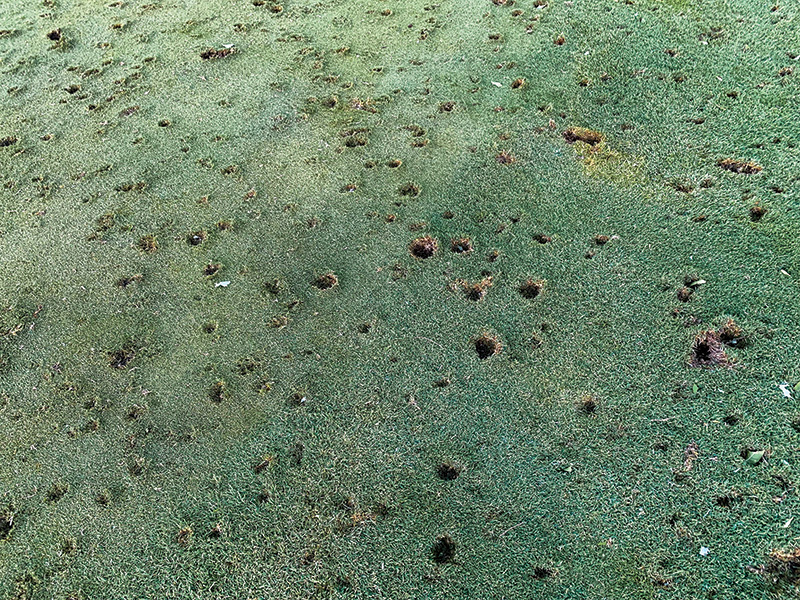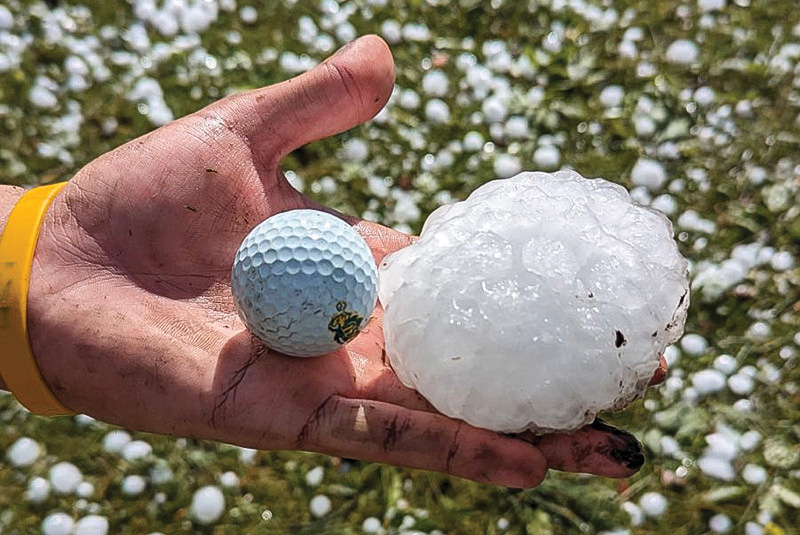Problem A: Uneven surface

Location: Buffalo Lake, Minn.
Turfgrass area: Golf green
Turfgrass variety: Bentgrass
Problem B: Rectangular area of dead turf

Location: Cabo San Lucas, Mexico
Turfgrass area: Driving range tee
Turfgrass variety: Seashore paspalum
Scroll down for answers.

Problem A: Uneven surface
Late in the afternoon, the day before this club was to host its invitational, the golf course was hit by a once-in-a-lifetime hailstorm. On the previous day, the course had received rainfall that softened up the soil a bit. During the hail event, which only lasted about five minutes, baseball-size hail hit the course and damaged all 18 greens. Some of the hailstones penetrated 3 inches deep. Cleanup involved the crew of 12 employees as well as more than 100 volunteers, some of whom were employees from neighboring courses, who brought mowers with vacuums, leaf blowers, rakes, shovels and even baked goods. Topdressing sand was used to fill in the larger holes that had settled out. The greens were then rolled, and some of the larger holes had to be seeded. The greens were also aerified and topdressed. The superintendent noted that rolling was instrumental in smoothing out the greens’ surfaces. Amazingly, the course was open for play seven days later.
Photograph submitted by Michael J. Knodel, owner and superintendent at Oakdale Golf Club in Buffalo Lake, Minn., and 30-year GCSAA member.

Problem B: Rectangular area of dead turf
This rectangular area of dead turf on a driving range tee was the result of a planned activity. This course had its annual member-guest event and decided to add a portable swimming pool to the festivities. Because the course has limited suitable spaces for such a structure, the driving range tee was selected, as it is nice and level. All the irrigation heads were marked prior to the event setup, and, after the structure was assembled, the pool was filled with the course’s desalinized water from its irrigation system. Chlorine and other additives were then applied to the water to make it sanitary and swimmable. The pool was in place for a little over a week before it was drained and disassembled. After removal, the damaged paspalum turf area on the tee was resodded.
Photo submitted by Robert Cline, CGCS, director of agronomy at Chileno Bay Club in Cabo San Lucas, Mexico, and 24-year GCSAA member.
Editor’s note: Have a photo of an on-course anomaly? GCM would love to have a look! Email it to Photo Quiz author John Mascaro.
John Mascaro is the president of Turf-Tec International.